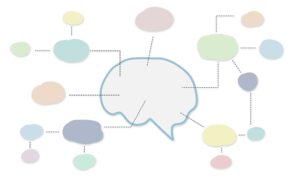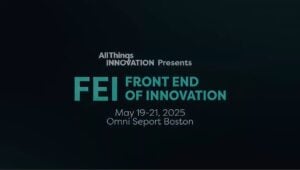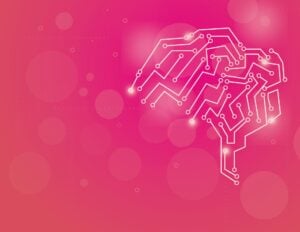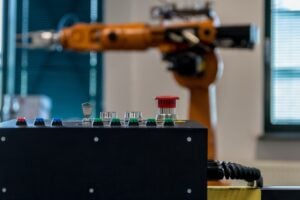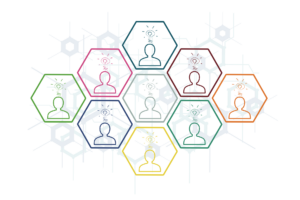KEY QUOTES
- “Technology for the sake of technology doesn’t do anything for anyone. If I’m being very candid, this is one of the big things that Web3 screwed up. It was a lot of like cool tech that solved no needs for anybody and therefore nobody used it.”
- “AI is a tool that mediates human labor. It fragments human labor, it breaks it up, it automates it, it de-skills it, and it categorizes it.”
- “There’s a huge risk attached to AI. If you are successful, there’s a risk of transforming your business without even realizing it.”
- “Innovation has to be a profit center. There’s no excuse. And to do this, you need to be systematic about incubation, because incubation is where everything happens, when you are turning ideas into proof of value.”
- “99% of the interview process, especially upfront, is focus on that knowledge, and your HR people are not going to be able to assess on these other axes.”
FULL SUMMARY
The Innovation Integration & Value Creation Track at FEI25 provided in-depth insights into how organizations can effectively integrate innovation into their core operations to create predictable value and ensure future growth. The sessions covered diverse aspects, from leveraging AI and understanding human-technology relationships to overcoming organizational and legal barriers, and fostering an engaged, strengths-based workforce.
Innovation as a Differentiator: Looking Back To See The Future
Jonathan Stringfield from Microsoft Advertising explored how video games offer a cognitive framework for understanding AI innovation and human-technology relationships. He argued that successful AI innovation must prioritize human experience and needs over technology for its own sake, drawing parallels between emotional connections with game characters and interactions with AI assistants like Copilot. The session emphasized designing AI interactions that are non-intrusive, contextually relevant, and provide appropriate rewards, leading to a more “Agentic web” where AI works on behalf of users and brands.
AI: The New Innovation Engine
This session explored AI’s transformative impact across the entire innovation funnel, from early-stage R&D to commercialization. The speaker emphasized that AI is not just an automation tool but one that mediates human labor, offering capabilities like summarizing, searching, generating content, acting as an interface, and modeling complex systems. While AI accelerates processes, its implementation must be strategic, considering both value assessment (automation and knowledge value) and practical constraints (time to value, clear metrics). A key warning highlighted was that successful AI implementation can inadvertently transform business priorities through feedback loops, necessitating careful consideration of these second-order effects.
Overcoming IT & Legal Barriers to AI Outcomes for Your Organization
This session delved into the challenges of implementing AI solutions from a legal perspective, noting that lawyers are trained to identify risks rather than opportunities, often lack technical backgrounds, and operate within a traditional apprenticeship model that resists innovation. Key concerns for legal departments include data protection and confidentiality (e.g., proprietary knowledge, training data use), AI hallucinations, records management for eDiscovery, and compliance with evolving regulations. The advice for innovators was to proactively address these concerns with reasonable risk mitigation strategies, rather than promising zero risk, and to engage legal teams early in the process.
Catalyzing Innovation and Change Through Strengths-Based Engagement
Christine Minh Minh Garner highlighted the global workplace disengagement crisis, costing $9.6 trillion annually, with managers being a critical factor in 70% of team engagement variance. She presented a strengths-based approach to combat this, demonstrating how leveraging individual strengths dramatically improves productivity, job satisfaction, and business outcomes. Her company, Talent Alchemy, offers programs that help leaders transition from bosses to coaches by implementing five key habits of high-performing teams: Aiming, Reflecting, High Five, Coffee Sink, and Progress Huddle. This approach emphasizes consistent practice and technology integration to embed strengths-based practices in daily workflows.
Unlocking Innovation at the Intersections of Art, Science and Academia
This session introduced “DaVinci’s Cube,” a three-dimensional model for innovation that expands on traditional frameworks by adding “sentiment” alongside “knowledge” and “use” as key motivational dimensions. Research from a National Endowment for the Arts project revealed that while organizations and individuals value sentiment and use in their work, hiring practices still predominantly focus on knowledge, creating a disconnect in how innovation teams are built. The session advocated for interdisciplinary approaches, creating spaces for unstructured experimentation (like historical Bell Labs), and fostering collaborations between artists, scientists, and industry to drive breakthrough innovation.
Stronger Together: How Progressive Streamlined Crowdsourcing
Progressive Insurance transformed its crowdsourcing approach by partnering with Mind Sumo, moving from a frustrating, time-consuming process to an efficient, flexible system that saved over 150 hours across five challenges. The partnership enabled Progressive to conduct both internal and external challenges, gathering over 800 ideas and gaining valuable outside perspectives that complemented their internal expertise. Mind Sumo’s collaborative platform, responsiveness, and superior reporting capabilities helped Progressive create a self-service model, reduce administrative time, and improve the overall crowdsourcing experience.
How Juanita’s Used Trends-Led Exploration To Break Into New Categories
Juanita’s Foods partnered with DIG Insights to transform its innovation process by starting with trends exploration rather than traditional consumer insights, enabling them to identify new white space opportunities beyond Mexican food categories. This comprehensive program included trends investigation, qualitative research, an immersive field trip to Mexico City with cross-functional stakeholders, platform development, and co-creation workshops. This approach helped Juanita’s shift from a manufacturing-focused operation to an insights-led innovation strategy aimed at defining new product categories that express authenticity in the market.
KEY TAKEAWAYS
- AI Accelerates, Human Insights Elevate: AI tools like Atlas and Charlie dramatically increase the speed and scale of innovation by synthesizing data and generating concepts, but continuous injection of fresh, non-conscious human behavioral data is crucial to prevent “model collapse” and ensure creativity and market relevance.
- Inclusive Design Drives Broader Value: Designing with, not just for, diverse user groups, including those with disabilities, expands market reach and leads to more universally effective and impactful products, proving that inclusive approaches are a strategic business advantage.
- Strategic Alignment and Economic Value are Paramount: Innovation efforts must be explicitly aligned with clear strategic objectives and driven by the economic value they create for customers (“dollars and cents”), moving beyond just features and benefits to ensure commercial viability and successful “harvesting” of ideas.
- Cross-Functional Collaboration and Rapid Iteration are Essential: Breaking down silos and fostering cross-functional collaboration from the earliest stages, combined with rapid prototyping and iterative testing, accelerates decision-making, uncovers blind spots, and builds organizational alignment and trust for innovation.
- Organizational Adaptation is Key for Emerging Technologies: Successfully integrating emerging technologies like AI requires not just technological innovation but also significant cultural and organizational adaptation, including creating specialized agile units and building “coalitions of the willing” to overcome resistance and drive change.
Delivery on Event Focus:
Aligning Innovation with Business Strategy:
The Innovation Integration & Value Creation Track at FEI25 directly addressed aligning innovation with business strategy by showcasing how leading organizations are integrating innovation into their core business processes. Speakers demonstrated how AI-powered tools ensure innovations are grounded in consumer insights and market realities, aligning them with manufacturing capabilities and brand equities. The emphasis on understanding the economic value created for customers underscored that innovation must directly contribute to business outcomes. The sessions highlighted the strategic importance of dual innovation structures, balancing sustaining and transformational efforts to serve both immediate business needs and future growth opportunities. Inclusive design was also presented as a strategic advantage, tapping into underserved markets and creating universally better products. Finally, cross-functional collaboration within innovation teams was shown to be crucial for ensuring innovations remain relevant to business objectives.
Delivery on Event Theme:
Harvesting Innovation & Sowing Seeds of Future Growth:
The track consistently delivered on the theme of “harvesting innovation and sowing seeds of future growth.” It showed how companies are “harvesting” insights from vast consumer data pools through AI and from existing knowledge investments, while simultaneously “sowing seeds” for future growth by exploring white spaces, new brand development, and emerging distribution models. The agricultural metaphor of invention as “sowing the seed” and innovation as “harvesting the crop” was central. The focus on protecting resources for future-focused work, continuous human data injection to prevent AI model collapse, and Welch’s balanced portfolio approach all underscored the commitment to nurturing long-term growth alongside immediate returns.
Action Items for Innovation Experts and Corporate Changemakers:
- Pilot AI-Driven Innovation: Evaluate your current ideation processes and pilot AI-driven innovation tools in specific areas (e.g., product development, partnership identification) to demonstrate value and accelerate timelines. Ensure these tools integrate diverse consumer data and align with strategic priorities.
- Integrate Automated Behavioral Science: Implement automated behavioral science and implicit testing methodologies to capture non-conscious consumer insights. Establish continuous human data collection systems to regularly inject fresh behavioral and emotional insights into AI models, preventing “model collapse” and fostering true creativity.
- Embed Inclusive Design Principles: Audit your design process to ensure diverse user perspectives, particularly from individuals with disabilities, are incorporated from the earliest stages of development. Adopt rapid prototyping and customization options to quickly iterate based on user feedback.
- Strengthen Cross-Functional Collaboration: Establish cross-functional innovation teams that meet regularly, breaking down silos and bringing all stakeholders (including legal, regulatory, and finance) into the process early to build shared understanding, address roadblocks creatively, and accelerate decisions.
- Assess and Adapt Organizational Structure: Evaluate your allocation of resources between sustaining and transformational innovation, considering separate but connected organizational structures with distinct cultures, metrics, and leadership behaviors. Develop AI competencies now to begin implementing AI tools in non-critical areas to build familiarity and demonstrate value.
Contributor
-

Seth Adler heads up All Things Insights & All Things Innovation. He has spent his career bringing people together around content. He has a dynamic background producing events, podcasts, video, and the written word.
View all posts







